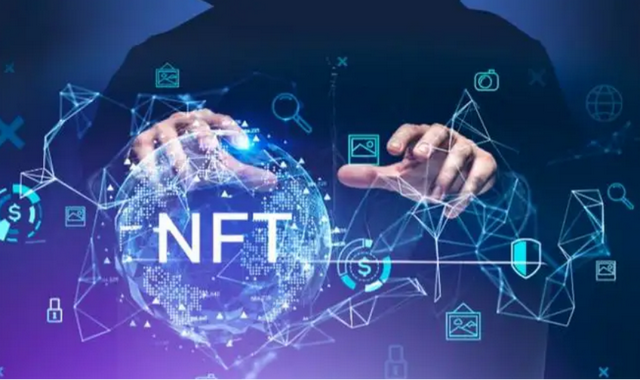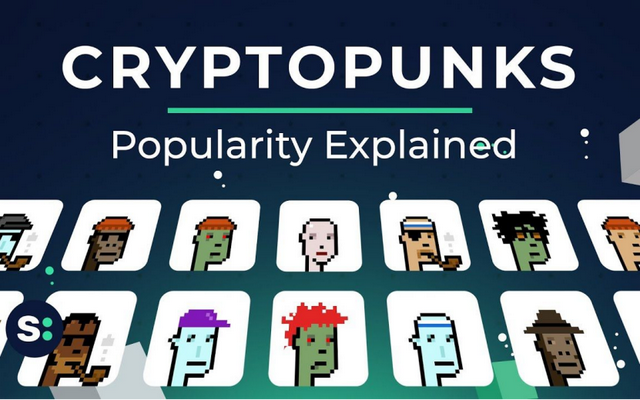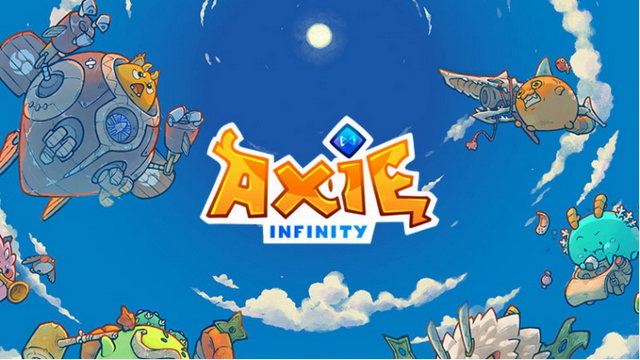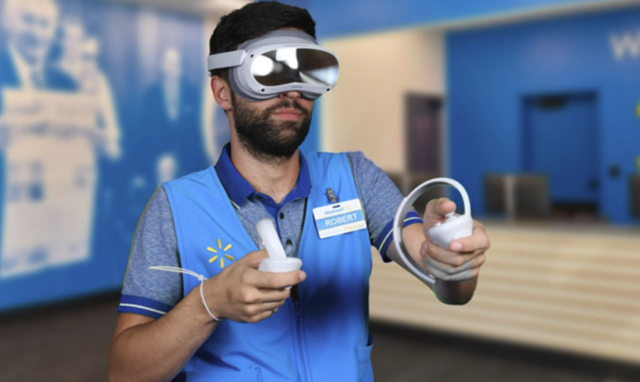The general trend! The metaverse industry is ushering in a new development trend, using NFT as a link to move towards the future

NFT stimulates new industrial formats
NFT is an abbreviation for Non Fungible Token, commonly translated as a non fungible token. In its most essential sense, it is a unique data unit on the blockchain digital ledger. The reason why it is called a non fungible token is a concept corresponding to FT (Fungible Token), which is a fungible token. They both have the attributes of digital assets, but the difference is that FT has separability and interchangeability, while NFTs each have uniqueness, immutability, and irreplaceability, thus possessing unique ownership attributes.
NFT artwork
NFT artworks may be the most well-known NFT project among the public at present. In March 2021, Christie's held its first NFT art auction, and artist Beeple's "Every Day: the first 5000 days" was sold for a high price of $69 million, which was $14 million higher than the $45 million transaction price of Impressionist artist Monet's "Water Lilies", bringing NFT art to an unprecedented level of attention. At the end of 2020, the global market value of NFTs was only 372 million US dollars. In 2021, the global market value of NFTs reached 16.891 billion US dollars, a year-on-year increase of 4440%. The global NFT trading volume in 2020 was 825 million US dollars, and the trading volume in 2021 was 17.695 billion US dollars, a year-on-year increase of 21350%.

NFT, as a technology applied on the blockchain, NFTs art pieces by casting metadata onto the blockchain, allowing them to have unique contract addresses across the entire network that cannot be replicated and made public. Through this technique known as "coinage", the artwork becomes an NFT digital collectible with both artistic value and inherent asset attributes, which is why NFT artworks are also known as encrypted artworks.
PFP NFT
If NFT artworks emphasize the avant-garde, experimental, and serious nature of artworks, then the PFP project created by NFT emphasizes its series, pop culture elements, and commercialized IP value. The earliest PFP project can be traced back to the CryptoPunks series created by Larva Labs Studios in June 2017.

This is a set of 24x24 pixel art images automatically generated by computer algorithms, with a total of 10000 unique characters. Initially, any user with an Ethereum wallet could claim them for free. As of February 2022, the most expensive # 5822 set a record high of 8000 ETH (Ether) in trading, equivalent to approximately $22.8 million at the time. With more and more celebrities and investors entering, owning one of the CryptoPunks series has become a symbol of identity and status.
Blockchain games
The so-called blockchain game is different from the previous Internet games in that the props, land, real estate, even avatar image and other assets in the game exist in the form of NFT, can be traded, and have value fluctuations according to the supply and demand relationship of the market. The first mainstream blockchain game that became well-known to the public was CtyptoKitties, launched at the end of 2017 based on the ERC-721 protocol. The real noteworthy event that pushed blockchain games to the phenomenal level was Axie Infinity, developed by a Vietnamese team. This is a blockchain game that integrates breeding pets, purchasing land, and fighting battles. In July 2021, its revenue reached 334 million US dollars, surpassing the revenue of Honor of Kings and becoming the most successful blockchain game to date.

In 2021, Axie Infinity Games achieved annual revenue of $1.3 billion and became the first NFT project to break through $4 billion in NFT transactions. In addition, there are open chain games represented by The Sandbox, Minecraft, Decentraland, etc. These games are sandbox games placed on the blockchain, allowing players to create, buy and sell, hold academic conferences, concerts, graduation ceremonies, and other activities. The land, props, clothing, and other items in the game are NFT-ized, and cross chain transactions can also be conducted not only in the game but on the blockchain. And players can not only play to earn, but also create to earn, greatly stimulating potential and market vitality, and having broad commercial application scenarios in the future.
Future application scenarios of the metaverse industry
The universe is regarded as the next generation of the Internet, involving virtual reality, augmented reality, digital economy and many other aspects. With the evolution of technology and the increasing maturity of the market, it has demonstrated unique application potential and innovation opportunities in various industries. Looking ahead to 2025, China's metaverse technology, industry, applications, and governance will achieve a qualitative leap and become an important growth engine for the digital economy. At the same time, the plan also focuses on cultivating eco-friendly enterprises with global influence, as well as specialized and innovative small and medium-sized enterprises, to create a gathering ground for industrial development.
The metauniverse is an immersive interconnected space integrating the digital and physical worlds, a future industry of integrated innovation and application of new generation information technology, and an advanced form of integration of digital economy and real economy. It is expected to lead the development of the next generation of Internet through the mutual promotion of virtual and real.

Currently, the global metaverse industry is accelerating its evolution, with NFT being crucial. As a unique and non interchangeable data unit, it can represent the ownership of related digital assets (such as images, music, or videos) and is therefore used as a digital property certificate. In the metaverse, NFTs can represent various assets of the digital world, such as digital items, online characters, avatar designs, digital appearances, etc. Every property and currency transaction involving NFT is fully recorded in the blockchain smart contract, which helps to prevent moral hazard and information asymmetry issues.
With the help of new technologies such as NFT, the future commercial applications of the metaverse industry can cover social, entertainment, gaming, fitness, work, education, and other fields, involving various aspects of people's daily lives. It can not only present various business opportunities in the physical world, but also achieve wider boundaries and larger scales than in the physical world.

Whether the market recognizes it is related to whether the industry can develop and grow in the future. We can take the lead in piloting and innovating application scenarios such as artificial intelligence, humanoid robots, quantum clouds, and the metaverse in fields such as digital government and digital society, laying a foundation for future industrial development. In terms of digital government construction, we can rely on quantum cloud and artificial intelligence technology to establish a sound national public data resource system, build an intelligent and intensive platform support system, improve data processing and business processing capabilities, and promote the continuous improvement of government service standardization, standardization, and convenience. In terms of digital society construction, we can further promote the construction of smart communities, integrating humanoid robots, metaverse, etc. into many fields such as smart buildings, smart homes, smart elderly care, intelligent nursing, etc., to create a new way of life for the future; Empowering cloud computing platforms with quantum clouds to enhance the computing speed and efficiency of the "urban brain", enhance risk prediction capabilities, and explore the construction of digital twin cities. In addition, new industrialization scenarios can be explored, cross-border integration scenarios can be created, and iconic scenarios can be constructed to promote the maturity of future industrial technology through product scale iteration and application.
The future industry represents the long-term development direction of technology and industry. After maturity and industrial transformation, it can play an important supporting and huge driving role in the national economy. Rather than reclaiming land and accumulating virtual assets in the cloud, it is more about transferring the advantages of physical space to the construction of a new world, as the deep connection between virtual and real is actually strengthening. In the context of the rapid advancement of technological media, existing knowledge can only illuminate a narrow space in front of us. However, in the "Future Industry Outlook", the use of Non Homogeneous Token (NFT) as a lever to plan and develop the metaverse industry has adopted a policy guidance approach of taking small steps, exploring and adjusting in a timely manner. Anyway, understanding the underlying logic of this new world will still give us more certainty.


 Türkiye
Türkiye
 中文
中文

